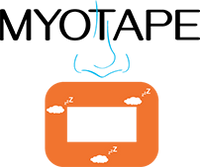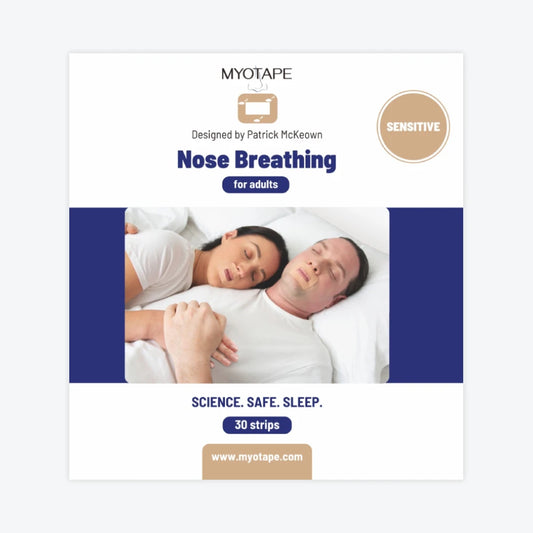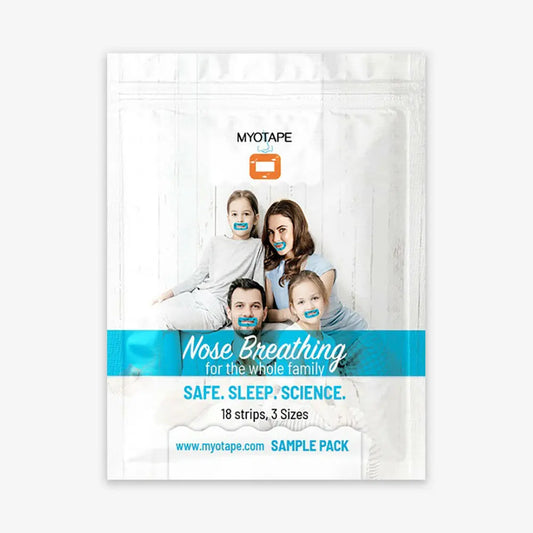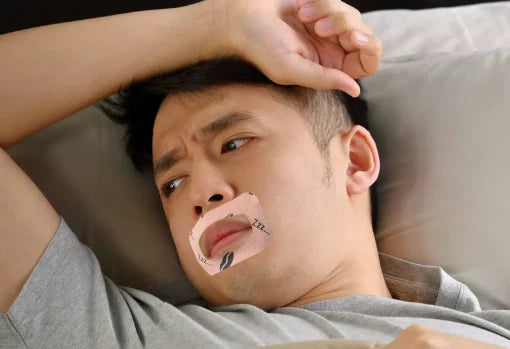A sleep study, or polysomnogram, is a diagnostic test that records your body functions while you sleep to identify sleep disorders. During the test, sensors are attached to your body to monitor brain waves, eye movements, heart rate, breathing patterns, oxygen levels, and muscle activity. This helps doctors assess the quality of your sleep.
The main purpose of sleep studies is to diagnose conditions like sleep apnea, narcolepsy, insomnia, and restless legs syndrome. By providing detailed information about your sleep architecture and breathing patterns, these tests help doctors determine the most appropriate treatment plan to improve your sleep quality and overall health.
Support Better Sleep with the Buteyko Method and MyoTape
If you're scheduled for a sleep study—whether to assess sleep apnea, CPAP therapy, or chronic snoring—there's a surprising factor that could influence your results more than you realize:
How you breathe before and during the test
By applying the Buteyko Method and using MyoTape consistently in the days or weeks leading up to your study, you can optimize nasal breathing, reduce mouth breathing, and potentially lower the severity of your sleep-disordered breathing.
1. Open Your Airway to Prevent Collapse
- Practice nasal breathing with correct tongue posture
- Rest the tongue three-quarters of the way up on the roof of the mouth. This gently supports the upper airway and helps prevent collapse during sleep. Training the tongue in this position can improve breathing patterns both during the day and while asleep.
- Engage your diaphragm
- Light, low breathing into the belly tones the upper airway muscles and activates the parasympathetic nervous system—your body's natural "rest and digest" mode—helping prepare you for deeper, uninterrupted sleep.
- Use MyoTape to support nasal breathing
- MyoTape is designed with a large hole in the middle—unlike traditional tapes that seal the lips. This hole acts like an escape hatch, allowing for mouth puffing (a reflex where air exits through parted lips if pressure builds up). MyoTape gently brings the lips together to encourage nasal breathing while still allowing airflow when needed.
It's a safer, more adaptable option—especially for those who are new to nasal breathing, have mild nasal congestion, or experience intermittent mouth puffing.
Used successfully by hundreds of people during sleep studies
Approved by many sleep technicians
Does not seal the lips shut—encourages, not forces, nasal breathing
2. Normalize Your Breathing Volume
- Improve your Control Pause (CP)
- The CP is a breath-hold test central to the Buteyko Method. A score of 20 seconds or more indicates good breathing efficiency. Practicing regularly helps build better breath control, lower respiratory rate, and more stable nighttime breathing.
- Train light, slow, and deep breathing
- Overbreathing disturbs the balance of oxygen and carbon dioxide in the body. Breathing gently through your nose supports optimal gas exchange and airway stability. The goal is light, soft, silent breathing that's barely noticeable.
- Do the Breathe Light exercise before bed
- A 10 to 15-minute session of reduced-volume breathing before sleep calms the nervous system, regulates breathing, and supports deeper sleep. Practicing the night before your test helps your body arrive at the sleep lab already relaxed and breathing optimally.
What to Do During Your Sleep Study
Apply What You've Practiced for Better Results
1. Continue Using MyoTape
If you've been using MyoTape at home, continue wearing it during your sleep study—it is highly likely to be permitted by your clinic or doctor.
MyoTape:
- Promotes nasal breathing
- Allows for mouth puffing if needed
- Does not fully seal the mouth
- Provides a more natural and less restrictive experience
Because it wraps around the lips rather than sealing them shut, sleep technicians allow its use. MyoTape is often favored over traditional lip-sealing tapes, particularly for those undergoing CPAP or MAD evaluation.
2. Settle Into Light, Calm Breathing
As you fall asleep, focus on your breathing:
- Light
- Slow
- Silent
- Through your nose
- Let your training from the Buteyko Method guide you into restful, natural breathing during the test.
What Can Improve Between Sleep Studies?
By integrating the Buteyko Method and MyoTape before and during your sleep study, you may notice significant improvements:
- Lower AHI (Apnea-Hypopnea Index)
- Fewer oxygen desaturations
- Increased time in deep and REM sleep
- Reduced mouth breathing and snoring
- Improved CPAP efficiency (lower pressure, fewer leaks)
These aren't just numbers. They translate to better sleep, more energy, and greater control over your health and well-being.
MyoTape was designed by renowned breathing expert and scientist, Patrick McKeown, with important studies like these in mind. It is a great mouth tape for CPAP users.
View our unique selection of mouth tapes in the online store and choose the perfect fit for you. We have mouth tapes for adults, for sensitive skin, for beards, and for kids.








